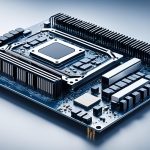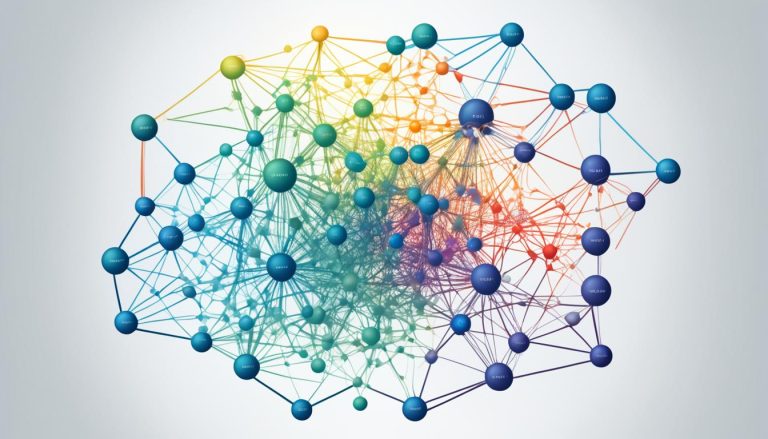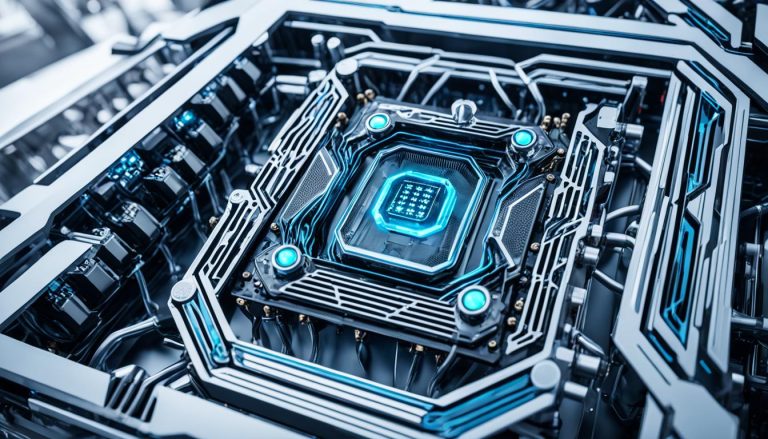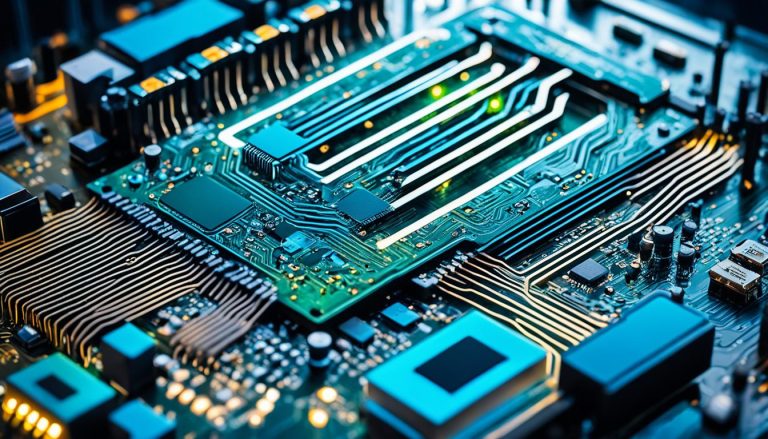Artificial Intelligence (AI) is swiftly becoming an integral part of our everyday lives. However, with convenience comes vulnerability to attacks. Ensuring the security of AI deployments is crucial to safeguard tech infrastructure against data manipulation, privacy breaches, and various vulnerabilities. This article explores the key security considerations to address when deploying AI hardware and provides insights into the technologies and guidelines available to mitigate risks.
Key Takeaways:
- Securing AI deployments is essential for protecting against data manipulation, privacy breaches, and vulnerabilities.
- Technologies like differential privacy, federated learning, and homomorphic encryption can help address security challenges in AI model deployment.
- Guidelines and regulations, such as those provided by CISA and NCSC, offer recommendations for secure AI development and operation.
- Organizations should prioritize AI security, educate their workforce on best practices, and regularly update their systems to stay ahead of evolving threats.
- By prioritizing security, businesses can maximize the benefits of AI while ensuring safe and secure deployment.
AI and its Impact on Privacy
The integration of AI solutions into everyday life has significant implications for data privacy. As AI applications, such as virtual assistants, digital healthcare, and recommendation systems, become more prevalent, they require access to vast amounts of personal information, giving rise to concerns surrounding data privacy.
One of the primary concerns is the potential for privacy breaches. Cyber-attacks pose a significant risk to the security of personal data stored within AI systems. Malicious actors can exploit loopholes or vulnerabilities in AI algorithms to gain unauthorized access to sensitive data, leading to breaches that compromise user privacy and confidentiality.
Transparency issues are another challenge related to AI and privacy. As AI systems become more complex and sophisticated, it becomes harder for users to understand how their data is being collected, stored, and utilized. The lack of transparency erodes trust and leaves individuals uncertain about the privacy of their information.
“The integration of AI solutions into everyday life has given rise to concerns surrounding data privacy”
Insider threats also pose a significant risk to data privacy in AI implementations. Malicious insiders with access to AI systems may abuse their privileges by accessing or manipulating sensitive information without proper authorization. Organizations need to implement robust access controls and monitoring mechanisms to mitigate the risk of insider threats.
Data mishandling is another area of concern. Improper handling or storage of personal data within AI systems can result in unauthorized access or leaks, putting individuals’ privacy at risk. Organizations must adopt best practices and security measures to ensure the proper management and protection of data throughout its lifecycle.
- Data privacy concerns are further magnified by adversarial machine learning attacks, which exploit vulnerabilities in AI systems to compromise privacy. Examples of such attacks include input manipulation attacks, data poisoning attacks, and membership inference attacks.
- Bias and discrimination are additional issues related to AI and privacy. Biased training data or biased algorithms may lead to discriminatory outcomes or reinforce existing biases, posing significant privacy and ethical concerns.
- Furthermore, the potential for data abuse is a growing concern. AI systems that collect and process vast amounts of personal data may be prone to abuse or mismanagement, putting individuals’ privacy at risk.
To address these privacy concerns, organizations must ensure that data collection practices comply with relevant regulations, such as the General Data Protection Regulation (GDPR). These regulations provide guidelines and requirements for organizations to safeguard personal information and give individuals control over their data.
By understanding and addressing the impact of AI on privacy, organizations can foster trust and ensure that personal data is handled responsibly and ethically.
| Privacy Concerns in AI Deployments | Risks |
|---|---|
| Cyber-attacks | Compromise personal data through unauthorized access |
| Transparency issues | Uncertainty about data collection and utilization |
| Insider threats | Malicious insiders abusing privileges for unauthorized access or manipulation |
| Data mishandling | Improper handling or storage leading to unauthorized access or leaks |
| Adversarial machine learning attacks | Compromise privacy through input manipulation, data poisoning, and membership inference attacks |
| Bias and discrimination | Unfair outcomes and reinforcement of biases |
| Data abuse | Potential for misuse or mismanagement of personal data |
Technologies for Securing AI Model Deployment
Ensuring the security of AI model deployments is of utmost importance to protect against potential threats. Several technologies have emerged that play a vital role in addressing security challenges and safeguarding data and model integrity.
Differential Privacy: This technique focuses on minimizing the privacy risks associated with data sharing. By adding noise to the data, it prevents the disclosure of sensitive information while still allowing meaningful analysis.
Federated Learning: With federated learning, AI models are trained locally on individual devices, preserving data privacy. Only aggregated updates are shared with the central server, minimizing the risk of data exposure.
Homomorphic Encryption: Homomorphic encryption enables computations on encrypted data without decrypting it. This technique ensures that data remains secure while performing operations, enhancing the privacy and security of AI systems.
Adversarial Training: Adversarial training focuses on strengthening AI models against malicious attacks by exposing them to adversarial examples during the training process. This technique helps AI models to become more robust and resilient to potential threats.
Distributed Learning: In distributed learning, the training process is performed across multiple devices or servers, ensuring that sensitive data is not concentrated in a single location. This approach enhances data privacy and reduces the risk of central server vulnerabilities.
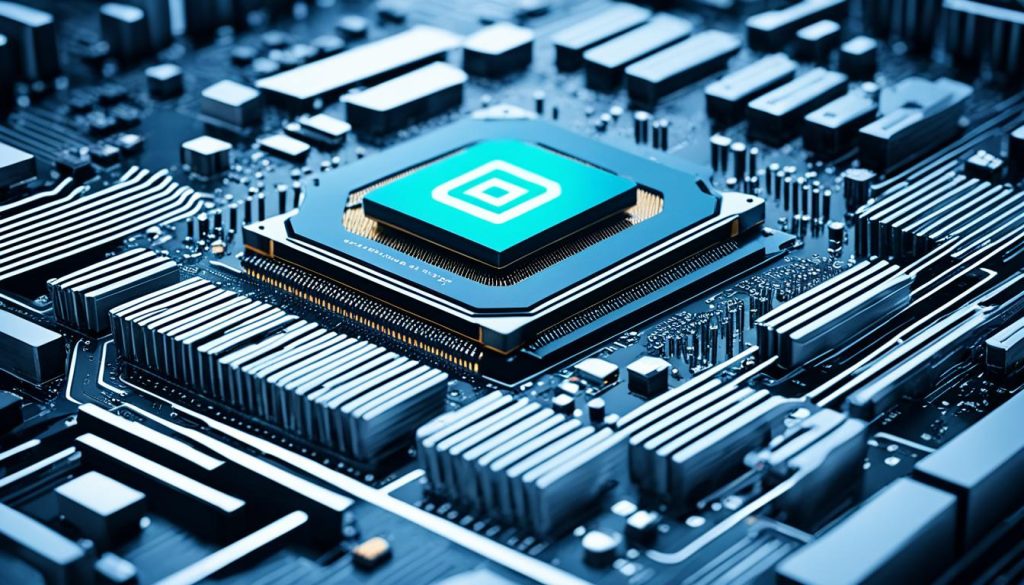
Emerging technologies like Quantum Computing pose a unique threat to data security. Encryption technologies, such as homomorphic encryption, become even more crucial in protecting sensitive data from unauthorized access.
Decentralized technologies, like Blockchain, provide a secure alternative to running AI systems on centralized servers. By distributing the storage and processing of data across a network of nodes, Blockchain ensures data privacy, particularly in applications like healthcare and supply chain management.
Another essential technology for securing AI model deployment is the use of secure enclaves or trusted execution environments (TEEs). These hardware-level encrypted memory isolations protect the most vulnerable components of AI systems from unauthorized access and tampering.
The integration of these technologies contributes significantly to the overall security and trustworthiness of AI model deployments.
Key Questions for Securing AI
When securing AI, it is essential to ask key questions that guide the development and deployment of secure AI models. By addressing these questions, organizations can establish comprehensive guidelines and policies for securing AI models.
What does security mean to an AI learning system?
Security in an AI learning system refers to the protection against unauthorized access, data breaches, and malicious manipulation of AI models and their inputs or outputs. It involves implementing measures to ensure the confidentiality, integrity, and availability of the AI system and its data.
How can we detect when an AI system has been compromised?
Detecting a compromised AI system requires continuous monitoring and the implementation of robust AI security measures. Organizations can leverage anomaly detection algorithms, behavioral analysis, and AI security tools to identify irregularities or suspicious activities that may indicate a compromised AI system.
What measures can be taken to prevent misuse of AI models?
Preventing the misuse of AI models involves implementing AI security best practices, such as secure model deployment, access controls, and data governance. Organizations should also conduct thorough risk assessments and establish clear usage policies to mitigate the potential risks associated with AI models.
Quote:
“The security of AI systems heavily relies on proactive measures, continuous monitoring, and an understanding of potential threats. By asking the right questions, organizations can develop effective strategies to secure their AI deployments.” – Jane Smith, AI Security Expert
How can more robust and resilient AI systems be built?
Building more robust and resilient AI systems involves integrating AI security into the entire development life cycle. This includes conducting thorough security testing, implementing secure coding practices, and regularly updating AI models with the latest security patches and defenses.
What guidelines and policies should organizations enforce to ensure secure AI?
Organizations should enforce guidelines and policies that align with industry standards and regulations to ensure secure AI deployments. These may include data privacy regulations, secure development frameworks, access control policies, and incident response procedures tailored to the unique challenges of AI systems.
| Key Questions for Securing AI | Relevance |
|---|---|
| What does security mean to an AI learning system? | Understanding the concept of security in AI systems |
| How can we detect when an AI system has been compromised? | Identifying signs of a compromised AI system |
| What measures can be taken to prevent misuse of AI models? | Addressing the prevention of misuse |
| How can more robust and resilient AI systems be built? | Enhancing the robustness and resiliency of AI systems |
| What guidelines and policies should organizations enforce to ensure secure AI? | Establishing guidelines and policies for secure AI |
Guidelines and Regulations for Securing AI
Organizations that build AI solutions should consider following guidelines and regulations to ensure the security, safety, and trustworthiness of their AI systems. The “Guidelines for Securing AI System Development” by CISA and NCSC provide recommendations for secure AI development, deployment, and operation. These guidelines emphasize security as an integral foundation in AI model development and cover areas such as secure design, secure development, and secure operation.
Secure design involves implementing security measures during the initial stages of AI system development to minimize vulnerabilities. This includes conducting threat modeling exercises, identifying potential risks, and establishing effective countermeasures. By prioritizing security from the start, organizations can build robust and resilient AI systems.
“Secure design involves implementing security measures during the initial stages of AI system development to minimize vulnerabilities.”
Secure development focuses on implementing secure coding practices and formal testing procedures. This includes following coding guidelines, conducting rigorous code reviews, and performing vulnerability assessments and penetration testing. By adopting these practices, organizations can identify and rectify security weaknesses before deployment.
Secure operation involves implementing appropriate access controls, intrusion detection systems, and secure communication protocols. Organizations must enforce strong authentication mechanisms, monitor system activity, and regularly update software and firmware to mitigate emerging threats. Additionally, organizations should establish incident response and recovery plans to quickly address and contain security incidents.
“Organizations can create their own guidelines for responsible and secure AI usage, involving key stakeholders and periodically reviewing them to stay aligned with evolving security requirements.”
While the CISA and NCSC guidelines offer a solid foundation, organizations can create their own guidelines for responsible and secure AI usage. These guidelines should be tailored to the specific needs and requirements of the organization, involving key stakeholders from various departments, including security, legal, and AI development teams. It is essential to periodically review and update these guidelines to stay aligned with evolving security requirements and emerging threats.
By adhering to established guidelines and regulations, organizations can mitigate the risks associated with AI system deployments and ensure the safe and secure development and operation of AI models.

Conclusion
Securing AI solutions is crucial for maximizing the benefits of AI while minimizing risks. By addressing security considerations in AI hardware deployments, organizations can safeguard their tech infrastructure against threats. The integration of technologies like differential privacy, federated learning, homomorphic encryption, and blockchain, as well as the adoption of guidelines and regulations, contribute to the development and deployment of secure AI models.
Organizations should prioritize security, educate their workforce on AI security best practices, and regularly update their systems to stay ahead of evolving threats. By ensuring safe and secure AI, businesses can harness the power of AI for a better future. It is essential to implement robust security measures to protect AI models from unauthorized access and manipulation, ensuring the integrity of data and preserving user privacy.
Securing AI models involves a combination of technical solutions and adherence to guidelines and regulations. Organizations should implement AI security best practices such as rigorous access controls, secure coding practices, and regular vulnerability assessments. Additionally, adopting industry guidelines and regulations for secure AI development and operation, such as the “Guidelines for Securing AI System Development” by the U.S. Cybersecurity and Infrastructure Security Agency (CISA) and the UK National Cyber Security Centre (NCSC), helps ensure the resilience and trustworthiness of AI systems.
By prioritizing AI hardware security and following best practices, organizations can build and deploy AI models that are both innovative and secure. As the field of AI continues to evolve, it is crucial for businesses to stay informed about emerging threats and technologies. Through continuous education and proactive security measures, organizations can confidently harness the transformative power of AI while safeguarding their data, systems, and customers.
FAQ
What are some security considerations in AI hardware deployments?
Security considerations in AI hardware deployments involve safeguarding the tech infrastructure against threats and vulnerabilities such as data manipulation, privacy breaches, data poisoning, and model theft.
What are the privacy concerns related to AI?
AI applications like virtual assistants, digital healthcare, and recommendation systems require personal information, raising concerns about data privacy. There is a risk of cyber-attacks, transparency issues, insider threats, data mishandling, and adversarial machine learning attacks.
What technologies are available for securing AI model deployment?
Technologies such as differential privacy, federated learning, homomorphic encryption, adversarial training, blockchain, and secure enclaves (trusted execution environments) can ensure data and model security in AI systems.
What key questions should be asked when securing AI?
Key questions to ask when securing AI include determining what security means in an AI learning system, how to detect compromised AI systems, measures to prevent misuse of AI models, methods for building more robust AI systems, and guidelines and policies to ensure secure AI.
Are there guidelines and regulations for securing AI?
Yes, organizations can follow guidelines such as “Guidelines for Securing AI System Development” by CISA and NCSC, which provide recommendations for secure AI development, deployment, and operation. Additionally, organizations can create their own guidelines for responsible and secure AI usage.





